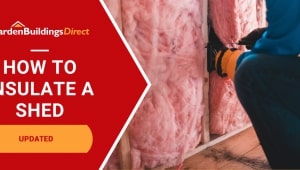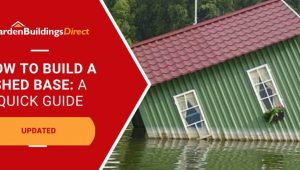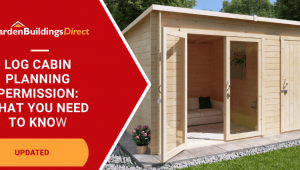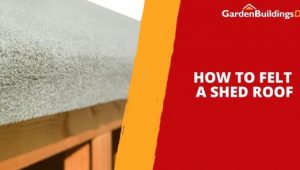Jump to:
If ‘uPVC’ has left you scratching your head, you’re not the only one. This guide explains the basics, including the benefits, for you. So, next time it pops up among the features while looking at garden rooms, you’ll know exactly what it means.
What is uPVC?
uPVC stands for Unplasticised Polyvinyl Chloride, and is an engineered plastic. This gives you a low-maintenance, lightweight, but strong building material. It’s commonly used to manufacture windows, doors, cladding, and more.
You’re not stuck with plain white—uPVC can be painted or given a wood-look finish. That makes it a great substitute for painted timber, but without the hassle of regular upkeep. It doesn’t warp, rot or fade easily either, since it holds up well against chemicals, water and sunlight.
The Benefits of uPVC (in Detail)

Here’s a closer look at what you get with uPVC:
An investment that pays off
uPVC is made from materials that are easy to source and produced using efficient methods. While it’s not the cheapest option out there, the price reflects the quality and benefits you get. You’re paying for something that lasts for years.
Built to handle daily wear
Unlike softer plastics, uPVC doesn’t have anything added to make it bendy or breakable. This makes it tough enough to hold its shape and resist breaking.
What’s more, it can take a knock, whether it’s strong wind or someone trying to break in. That’s why it works well outdoors, especially for garden buildings.
Minimal maintenance needed
Not having to constantly clean, treat, or repaint your windows saves time, effort, and money. Because uPVC doesn’t absorb water, it doesn’t need the annual treatment that timber does.
uPVC is also easier to work with in the event of condensation. You’ve probably seen what double-glazed windows look like when they have moisture trapped inside, between the two panes of glass. It ruins the appearance of the windows, obscures your view through them, and makes them look unclean.
With double glazed garden room windows fitted in wooden frames, they have to be replaced by removing the window from the building, complete with the frames, and replace the entire window unit. Usually you will only be able to find a matching window from the original manufacturer. However, with uPVC, the process is different and you can just replace the glass alone without having to buy a whole new window. uPVC windows allow you to remove the beading that holds the glass in, and then it should be simple enough to find a replacement double-glazed pane from any building parts supplier in the exact size you require.
Lighter to move, quicker to fit
uPVC’s composition makes it much lighter than metal or timber. It has hollow chambers inside the frames, reducing the material overall. This also means fitting it or replacing parts is less of a strain and can be done quicker.
Better insulation, lower bills
uPVC frames do a good job of keeping heat inside during winter and blocking it out in summer. That’s because the material doesn’t conduct heat well. It slows down heat moving in or out.
Plus, many frames have seals and air chambers that add extra insulation. In the case of garden rooms, you’ll get a snug, home-like feel throughout the year, along with lower energy bills.
The heat transfer of a building is measured in a U value. The lower the value, the better the insulation (because less heat is being lost). Here is a table showing the impact that different window types have on the U values of buildings in general:
| Window Type | Typical U-Value (W/m²K) |
| Single Glazing | 4.8 – 5.8 |
| Double Glazing | 1.2 – 3.7 |
| Triple Glazing | <1.0 |
| uPVC Frames | 0.9 – 1.4 |
| Timber Frames | 1.2 – 1.6 |
Is uPVC Worth It for a Garden Room?
Yes, especially if you’re planning to use the space often or year-round. This can be a home office, garden bar, or a retreat to relax with friends and family.
It’s not the cheapest upgrade, though. In some cases, it can cost nearly as much as the garden room itself. But if what you need is long-term comfort and fewer headaches down the line, it could be a smart investment.
You’ll mostly find uPVC features, either as extras or standard, on log cabins that are 44mm thick or more, and on our insulated buildings range. Interested? Have a look at our range of 44mm log cabins with this upgrade option while you’re here.
Up next on your reading list: Log Cabin Wall Thickness Guide





